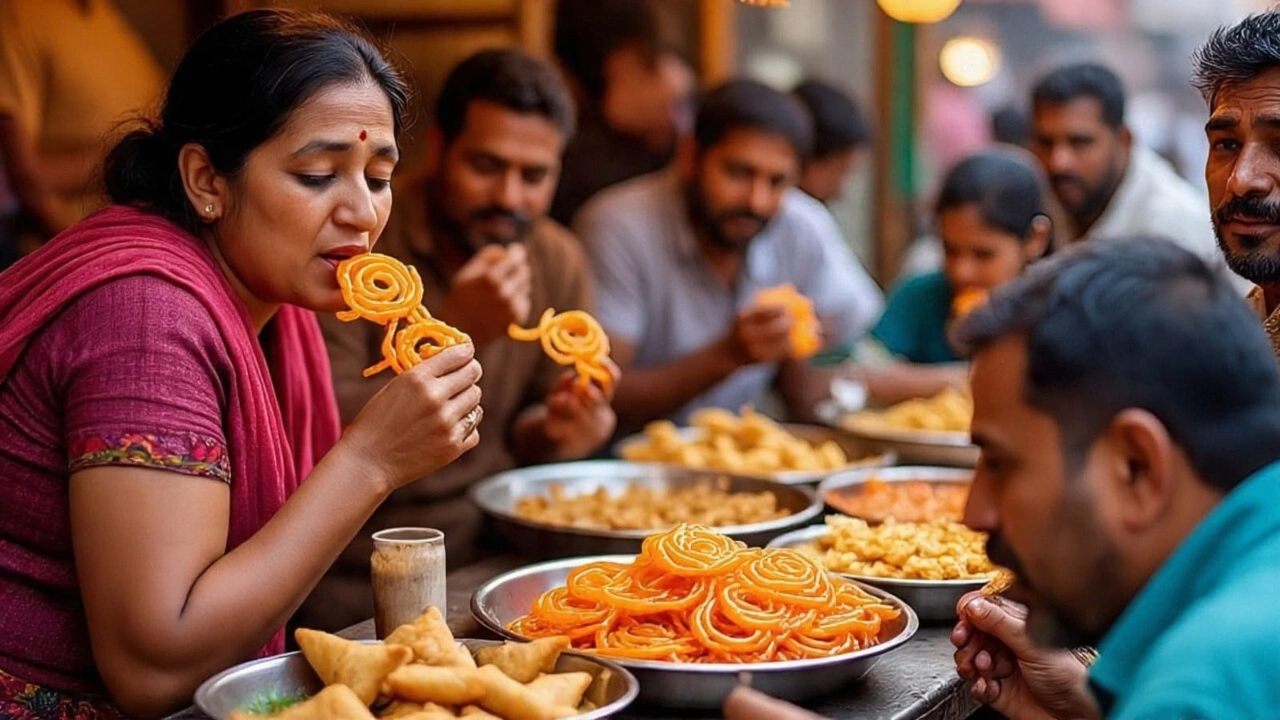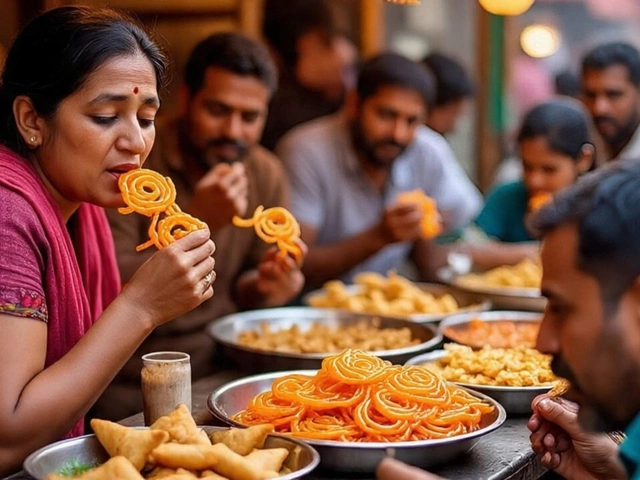
On July 15, 2025 Ministry of Health and Family Welfare issued an official clarification after a wave of media stories claimed the government was mandating cigarette‑style health warnings on beloved Indian snacks. The misunderstanding stemmed from a June 21, 2025 letter penned by Punya Salila Srivastava, the Central Health Secretary, warning of a looming obesity crisis. Press Information Bureau (PIB) stepped in, refuting the notion of compulsory label stickers and instead outlining a new “oil and sugar boards” initiative for central government institutions such as AIIMS Nagpur. The move, while modest, signals a shift toward more transparent food‑information policies and has sparked debate among health professionals, policymakers, and the public.
Background: Why the Government Is Turning Its Eye to Snacks
India’s urban overweight rate has surged dramatically over the past decade. Recent surveys indicate that one in five adults in cities is already overweight, and the Ministry’s internal projections warn that by 2050 roughly 44.9 crore (449 million) Indians could be classified as overweight or obese—placing the nation second only to the United States. In her June 21 letter, Punya Salila Srivastava highlighted the cascading health risks: heightened incidence of type 2 diabetes, hypertension, coronary disease, certain cancers, and even mental‑health strains such as depression and reduced mobility.
The directive was not born in a vacuum. Earlier in 2024, the World Health Organization urged governments to adopt front‑of‑pack nutrition labeling, a recommendation India had resisted due to concerns over trade and cultural backlash. However, the escalating cost of obesity‑related healthcare—estimated at over ₹1 trillion annually—has forced officials to reconsider. The “oil and sugar boards” are positioned as a behavioral nudge, a middle ground between full‑scale packaging warnings and the status quo of no guidance.
What the Directive Actually Says
The clarified policy instructs all central government facilities—hospitals, schools, and office cafeterias—to install static displays that break down the hidden fats and sugars in popular street‑food items. The boards will list the average gram‑per‑serving content for snacks like samosas, jalebis, ladoos, vada pav, and pakoras. They are to be placed in high‑traffic areas such as dining halls, canteens, and waiting rooms, offering a “quiet but precise reminder” to patrons.
Crucially, the guidance stops short of imposing any mandatory labeling on product packaging. The Ministry emphasized that the boards are a “behavioral nudge” rather than a regulatory warning, aiming to empower individuals to make informed choices without stigmatizing India’s rich street‑food culture.
Reactions From the Health Community and Media
Dr. Amar Amale, President of the Cardiological Society of India’s Nagpur chapter, welcomed the move, describing it as “the beginning of an era where food labeling will be as serious as tobacco warnings.” He added that trans fats and added sugars function as “the new tobacco” for cardiovascular health. “People have a right to know what they’re eating,” he said in an interview conducted at Nagpur’s AIIMS cafeteria.
Media outlets, however, initially ran with sensational headlines. Hindi‑language channel Aaj Tak and several YouTube personalities reported that samosas would soon carry graphic health warnings akin to cigarette packs. The resulting public outcry forced the Ministry to act swiftly, with PIB publishing a fact‑check that labeled those claims “misleading, incorrect, and baseless.”
Impact Assessment: What This Means for Indians
While the immediate reach of the boards is limited to government premises, the symbolic weight could ripple outward. If the displays prove effective—early pilot data from a 2023 pilot in Delhi’s government hospitals suggested a 12 % reduction in high‑sugar snack purchases—other ministries may adopt similar measures.
Economists note that even a modest dip in obesity prevalence could save billions in healthcare expenditures over the next decade. Moreover, the policy may encourage food manufacturers to reformulate products, anticipating future regulatory pressure.
Looking Ahead: Potential Expansion and Challenges
The Ministry hinted that the “oil and sugar boards” could be rolled out to all public sector institutions within the next year, possibly extending to state‑run schools and municipal offices. Critics argue that without a national labeling law, the impact will remain fragmented.
Another hurdle is enforcement. Ensuring that boards are regularly updated with accurate nutrition data requires coordination between the Food Safety and Standards Authority of India (FSSAI) and individual institutions. There is also the cultural dimension: street‑food vendors, who operate largely outside formal regulatory frameworks, may feel targeted, even though the Ministry insists the move is not an affront to traditional cuisine.
Key Facts
- Date of clarification: July 15, 2025.
- Originating letter: June 21, 2025, by Central Health Secretary Punya Salila Srivastava.
- Projected obesity in India by 2050: 44.9 crore (≈449 million) people.
- First institutions to implement boards: AIIMS Nagpur and other central government cafeterias.
- Board content: grams of oil and sugar per typical serving of snack items.
Frequently Asked Questions
What exactly are the "oil and sugar boards"?
They are static informational displays placed in government cafeterias that list the average amount of oil (in grams) and added sugar (in grams) found in popular Indian snacks such as samosas, jalebis, and vada pav. The aim is to give people a quick visual cue about hidden calories.
Why did the media claim there would be cigarette‑style warnings?
The confusion arose from a summary of the June 21 letter that mentioned “behavioural nudges.” Some outlets misread “nudges” as “mandatory warning labels,” a misinterpretation that PIB later corrected.
Will private restaurants have to follow the same rules?
No. The current directive applies only to central government institutions. However, the Ministry hinted that a broader, possibly nationwide, labeling policy could be considered in the future.
How might this initiative affect India’s obesity rates?
Early pilots suggest that visible nutrient information can curb impulse purchases of high‑sugar snacks by about 10‑15 %. If scaled, the cumulative effect could modestly lower national obesity trends and reduce related healthcare costs.
What role does the Food Safety and Standards Authority of India (FSSAI) play?
FSSAI will verify the nutritional data shown on the boards and ensure consistency across institutions. Coordination between FSSAI and each facility is essential for accurate, up‑to‑date information.


Comments
Post Comment